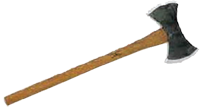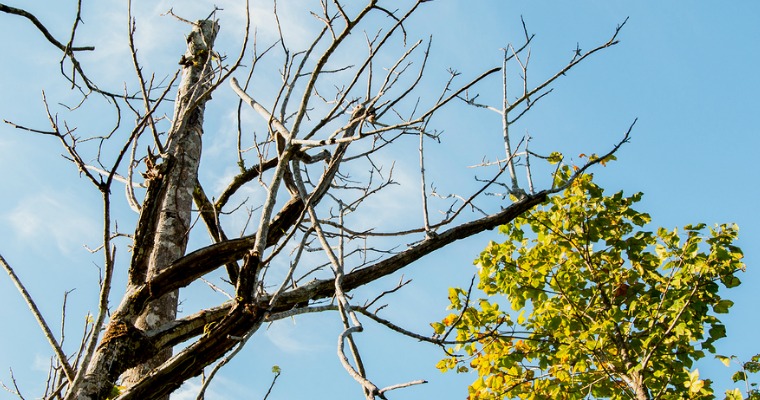Do you have dead or dying trees in your landscape? Well, you aren’t alone. Millions of homeowners throughout the United States have at least one dead or dying tree in their landscape.
While some people brush it off as nothing more than an aesthetic issue, the presence of critically unhealthy trees such as this can cause some serious problems for homeowners and their family members.
The Biggest Problem with Dead and Dying Trees
One of the biggest problems posed by a dead or dying tree is the potential for property damage and/or bodily injury.
As a tree dies, it begins to decay and decompose. And conventional wisdom should tell you that a decaying tree is more likely to fall over than a healthy, living tree.
A storm or even a strong gust of wind may uproot a dead tree, sending it toppling over your home.
Problems such as these are easily prevented, however, by removing dead trees from your landscape.
Even if a dead tree doesn’t fall, its limbs may still snap off, also causing property damage and/or bodily injury.
The weak branches can easily snap and fall to the ground below. If you happen to park your car under it, you may find yourself calling the insurance company.
Dead and Dying Trees are Pest Magnets
A lesser-known problem associated with dead and dying trees is the presence of pests.
Dead trees are like a magnet for pests, bringing termites and other burrowing insects to the decaying organic matter. Once these pets take refuge in the tree, they’ll begin exploring other nearby structures for a new source of food, which may include your home.
On the other hand, however, healthy trees are beneficial for homeowners. They promote clear air by filtering impurities; create shade and natural cooling for the home; and even increase the home’s selling value.
When to Remove Dead and Dying Trees
So, how do you know when it’s time to remove a tree?
According to an article published by the University of Maryland’s College of Agriculture and Natural Resources, a good rule of thumb is to remove a tree when at least 50% of its mass is damaged.
While it’s difficult to determine exactly how much of a tree is dead, use your best judgment – if it’s more than half, contact a professional tree removal company to remove it from your landscape.
Simple Steps to Keep Your Trees From Dying
You can reduce the risk of your trees from dying by following a few simple steps. First and foremost, make sure your trees receive plenty of water, especially during droughts.
Also, keep an eye out for signs of disease. Depending on the specific disease, you may be able to treat it using neem oil or other safe and natural solutions.
The Woodsman Company offers tree planting, tree pruning and shrub trimming, tree removal and stump grinding as well as a tree wellness program.
If we can help with any of your tree care needs give us a call at 512-846-2535 or 512-940-0799 or


I’m not sure that the tree in my backyard is at least 50% damaged. However, it’s quite noticeable that my tree is dying. I figure, in my case, it might be best to get it removed now before any more branches fall off.